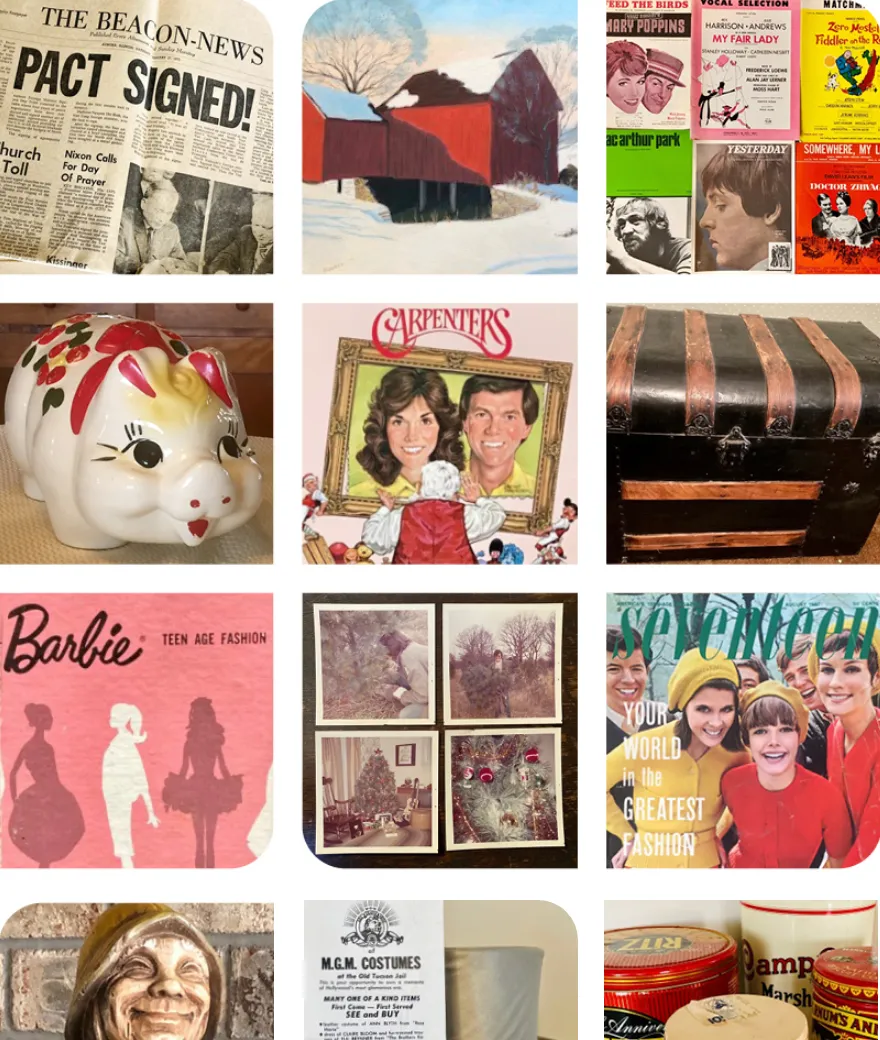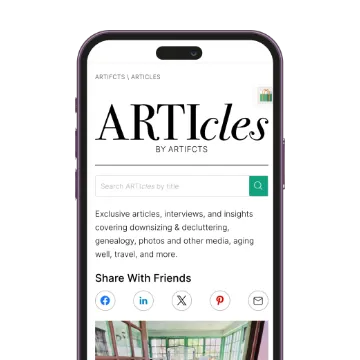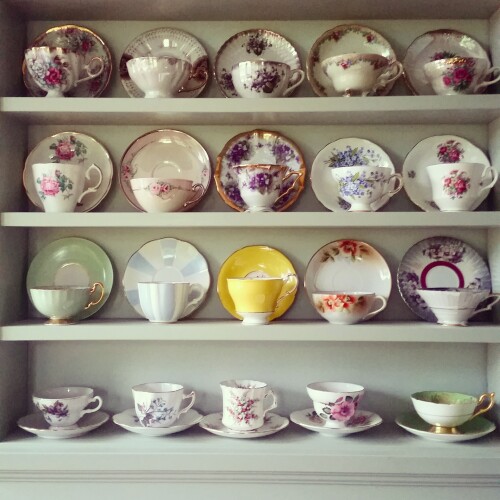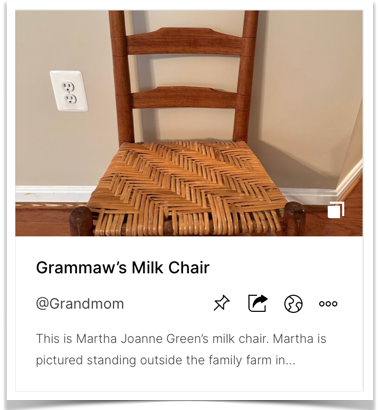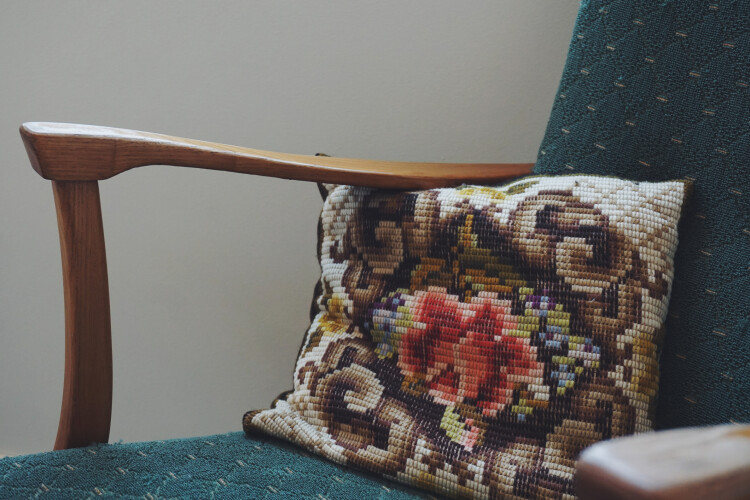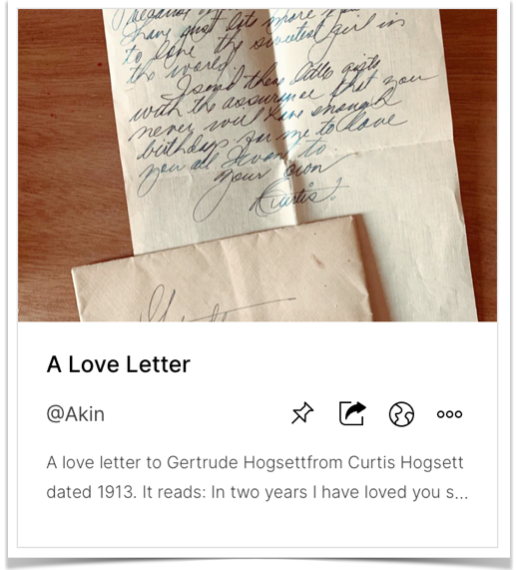The wealth being passed down from Baby Boomers isn’t just dollars — it’s decades’ worth of ‘stuff.’ As we enter what many call the Great Wealth Transfer, the children of Boomers are discovering that a big chunk of what they inherit comes in the form of physical objects: collections, vintage items, and sometimes things nobody quite knows what to do with.
Our Co-Founder, Heather, discovered this firsthand after losing her mother and having to sort through SO. MUCH. STUFF.
What’s Actually Being Inherited
According to a recent Bloomberg article by Chris Rovzar, as much as $90 trillion in assets will change hands over the next few decades. But alongside financial assets lie a mounting inheritance of physical belongings. We're talking about antique furniture, sterling silver flatware, model trains, Hummel figurines, cut-crystal glassware — even miniature pianos.
Some of these items carry deep sentimental value. For others, not so much. The result? Many heirs feel buried under a mountain of ‘stuff’ they didn’t necessarily ask for.
Why There's So Much ‘Stuff’
Collectors never stopped collecting. Boomers who built their collections over their lifetimes didn’t always see them as clutter. Their passions were real — and they hoped their kids would appreciate them too.
As we age, many of us may want to downsize. But instead of letting go, we hold on to beloved items or leave the bulk to the next generation. Matt Paxton, star of both Hoarders and Filthy Fortunes, and Advisor to Artifcts sees this daily as he and his team help families downsize and somehow deal with all the ‘stuff.’
We are also great at avoiding tough conversations. Not all families talk about what to keep and what to let go of. Without clear plans, decisions fall to the children — who are often under emotional stress.
The Impact on the Next Generation
For many Millennials and Gen Xers, dealing with their parents’ estates isn’t just a financial task — it’s deeply emotional work. Rovzar describes cleaning out a parent’s house as “upsetting, stressful and deeply sad,” but also cathartic when you find unexpected treasures like a long-lost recipe or beloved childhood memento.
On the practical side:
- Storage is becoming a challenge. Some families use storage units to hold inherited objects, which can be costly. Self-storage is a $59 BILLION dollar industry in the US alone.
- Selling isn’t always easy. Vintage doesn’t always mean valuable. Many items have limited resale markets.
- Keeping the legacy feels heavy. Not every object has a clear inheritor, and not all heirs want what their parents collected.
What Can Be Done — Thoughtfully
Do you find yourself or your loved ones staring at the oncoming ‘stuff’ tsunami and not sure what to do? We asked experts across the organizing, downsizing, and photo management industries on how to navigate this transfer of stuff:
Have conversations early. Parents and children should talk about what matters, what doesn’t, and what to do with sentimental vs. practical belongings.
Prioritize what to keep. Not everything needs to survive for another generation. Choosing key heirlooms can help reduce clutter while preserving meaning. Check out our guide to Swedish Death Cleaning to help you purposefully choose which possessions to hold onto and which possessions to rehome or let go of altogether.
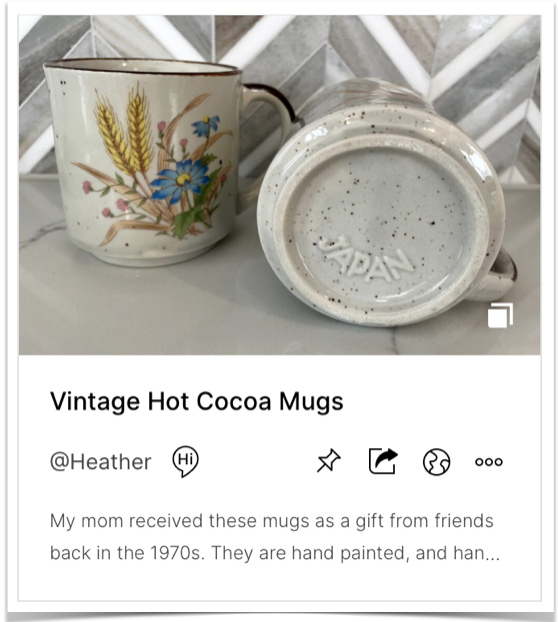 Our Co-Founder Heather kept these vintage hot cocoa mugs after her mother passed--not for the financial value but because of the memories.
Our Co-Founder Heather kept these vintage hot cocoa mugs after her mother passed--not for the financial value but because of the memories. Be realistic about disposal. Items that don’t hold value may be donated, recycled, or sold. A professional estate sale service can help. Learn more about estate sales and other online options for selling items in our Everything You Need to Know Before Heading to Your First Estate Sale ARTIcles story.
Document provenance. If a piece has real historical or monetary value, keeping a record helps with future decisions and may make it more meaningful. It can also help your heirs not be “the ones” who accidentally donate a Picasso to Goodwill.
Why This Matters
This isn’t just a story about stuff — it’s about generational legacy, memory, and how we value our lives through objects. As wealth moves from one generation to the next, what we inherit isn't just bank accounts; it’s a tangible piece of who our parents and grandparents were.
For many heirs, sorting through these items is more than a transaction. It’s a way to understand their loved ones, decide what to carry forward, and gently close chapters in a responsible and emotionally respectful way.
As you look around your home — or your parents’ if you happen to be heading home for the holidays— notice the items that hold meaning:
- The broach worn on a wedding day
- The tool passed down from a grandfather
- The ticket stub from a once-in-a-lifetime concert
- The odd little figurine that always sat on the mantel
Those keepsakes aren’t just things, they’re experiences, memories, and connections waiting to be captured. Take a moment to Artifct those items, capture the story, the history, and all the little details that make you smile, laugh, or remind you of your loved one(s). Give future generations the context they need — not just the clutter, because the real inheritance isn’t the ‘stuff.’ It’s the life stories and memories behind it.
Still with us? Extra credit if you use our “In the Future” field to tell your heirs what to do with the item when the time comes — keep, donate, sell, bequeath, or “as you wish.” Lift the weight of uncertainty before it ever lands on their shoulders.
###
© 2025 Artifcts, Inc. All Rights Reserved.
